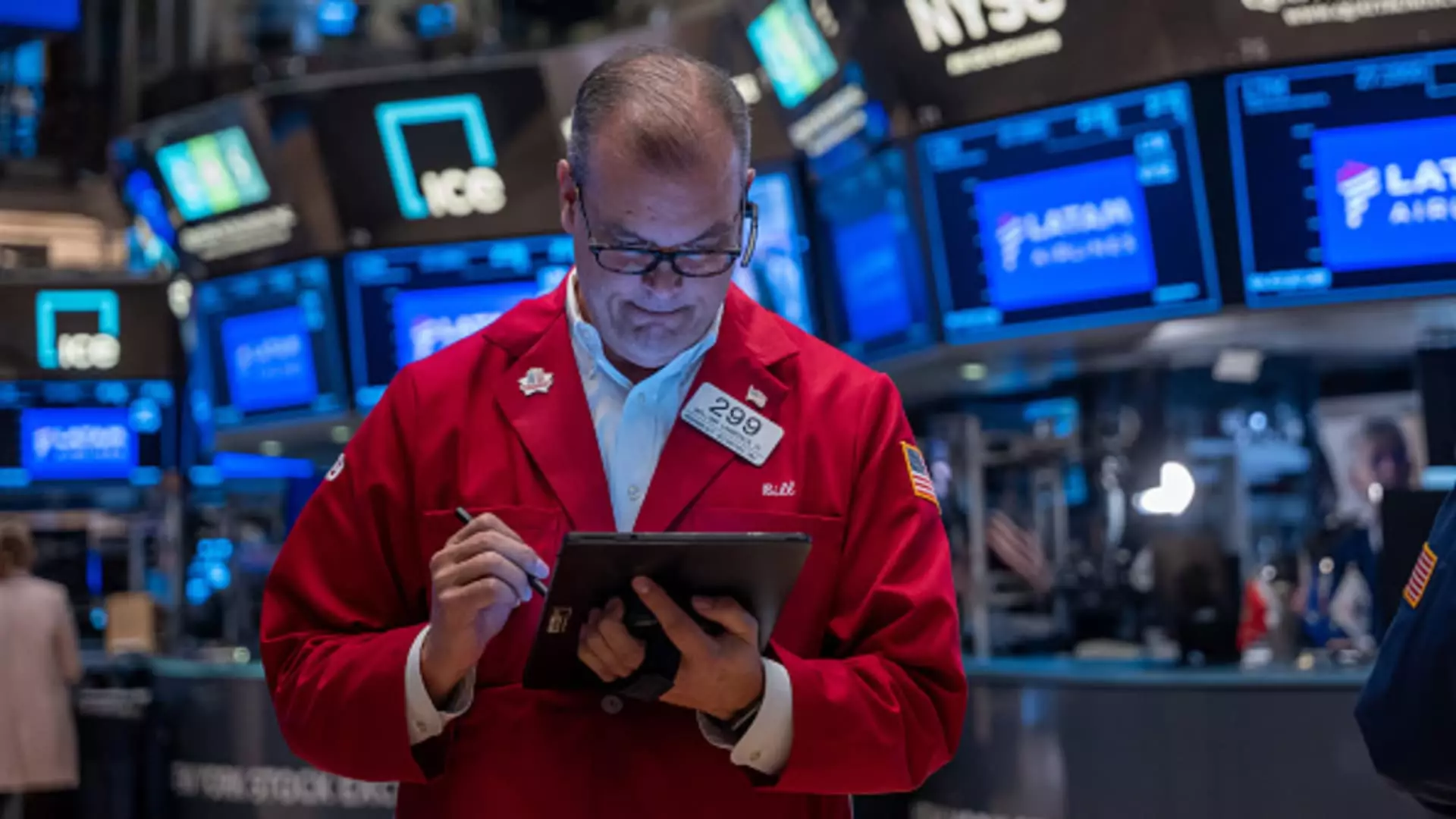The financial landscape is perpetually fluctuating, and staying abreast of current trends is crucial for investors and analysis enthusiasts alike. “Stocks @ Night” serves as a vital resource, delivering insights and forecasts as market activity comes to a close. As we approach the next trading session, it is essential to dissect what has transpired throughout the day, as well as to speculate on potential outcomes for future sessions. Recently, both the Dow Jones Industrial Average and the S&P 500 indices faced declines for two consecutive days, reflecting a somewhat bearish market sentiment.
As the day’s trading closed, certain market indicators captured the attention of traders and investors. Among these was the benchmark yield on the 10-year Treasury note, which rose above 4.2%. This uptick suggested renewed investor anxiety regarding interest rates and inflation, leaving analysts to ponder the implications of such trends. Perhaps more remarkable was the overwhelming interest in the 10-year yield, which dominated searches on CNBC.com, illuminating a deepening fixation on government bonds rather than stocks.
The intricate world of Treasury yields is defining the current environment in which investors operate. With various maturities displaying different yields—such as the two-year yield holding steady at 4.03% and short-term Treasury bill yields ranging from 4.26% for one year down to 4.78% for one month—market players face a complex decision-making landscape. The yield on the six-month Treasury bill recorded 4.49%, and the three-month bill yielded 4.63%, indicating a robust demand for low-risk assets during uncertain times.
Investors are not merely focused on government debt; corporate bond ETFs are also drawing attention. For instance, the Fidelity Corporate Bond ETF (FCOR) exhibits a yield of 4.11%, while high-yield options like the iShares iBoxx High Yield Corporate Bond ETF (HYG) are yielding 5.88%. Such figures indicate a divergence of investor capital as they seek opportunities that may balance risk against potential returns.
As we look toward the companies poised to release earnings reports and pertinent business insights, it is essential to note the significant developments from major market players such as Starbucks and McDonald’s. Starbucks recently faced a substantial stock decline, plummeting 4% in extended trading due to sliding same-store sales and a suspension of guidance for fiscal 2025. To combat investors’ concerns, the coffee giant announced a dividend increase—a strategy that often serves to reassure anxious shareholders.
Meanwhile, McDonald’s faces a distinct crisis as the Centers for Disease Control and Prevention issued an alert regarding E. coli cases purportedly linked to its food products. The fast-food titan’s stock dipped approximately 6% in after-hours trading, putting pressure on a company that had just reached a new stock high. Notably, industry comparisons may arise as reminiscent echoes of Chipotle’s struggles with similar food safety issues continue to resonate in the market.
As attention pivots towards upcoming reports, notable executives are slated to address audiences on CNBC. Boeing will be on the radar, as it has seen a 5% increase in stock value over the past week, notwithstanding its 10.6% decline in the last three months. CEO Kelly Ortberg is set to speak, which could shed light on the company’s future trajectory given recent labor negotiations involving its workers’ union.
Coca-Cola’s forthcoming quarterly report is also generating buzz. With a stock rise of 7% over recent months, investors are keenly observing how the company stacks up against its own projections, particularly as it strives to maximize shareholder wealth following previous performances.
As we draw closer to critical earnings announcements from various corporations across sectors ranging from technology to consumer goods, a nuanced understanding of the market dynamics at play becomes imperative. With uncertainty casting a shadow over many sectors, investors must tread carefully, balancing risk with the pursuit of returns while closely monitoring yields and corporate financial health.
Overall, the market is at a crossroads, grappling with complex forces that will undoubtedly continue to shape the financial landscape. The importance of diligence and strategic decision-making cannot be overstated; as evidenced by current trends, being informed remains one of the most valuable tools in any investor’s arsenal. Such vigilance is key to weathering the numerous twists and turns that define the ever-evolving marketplace.

